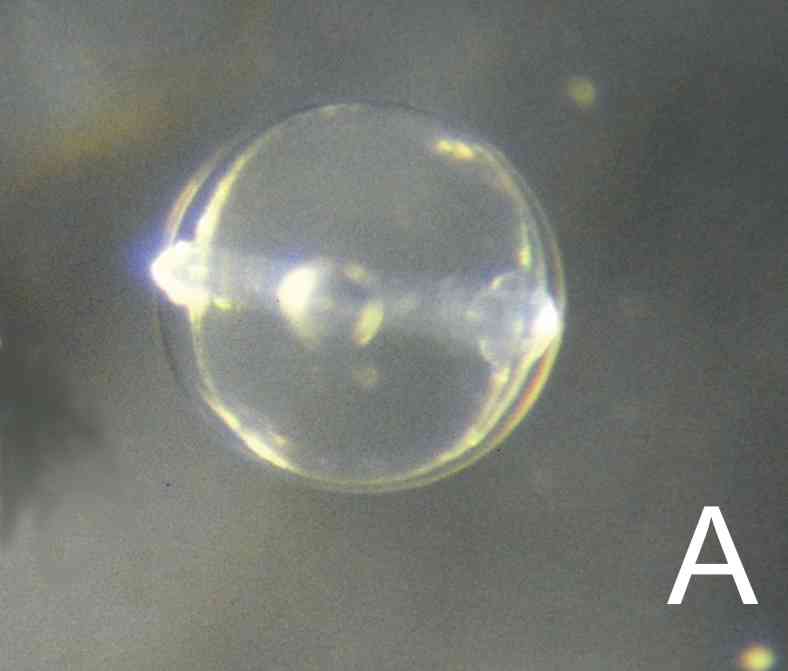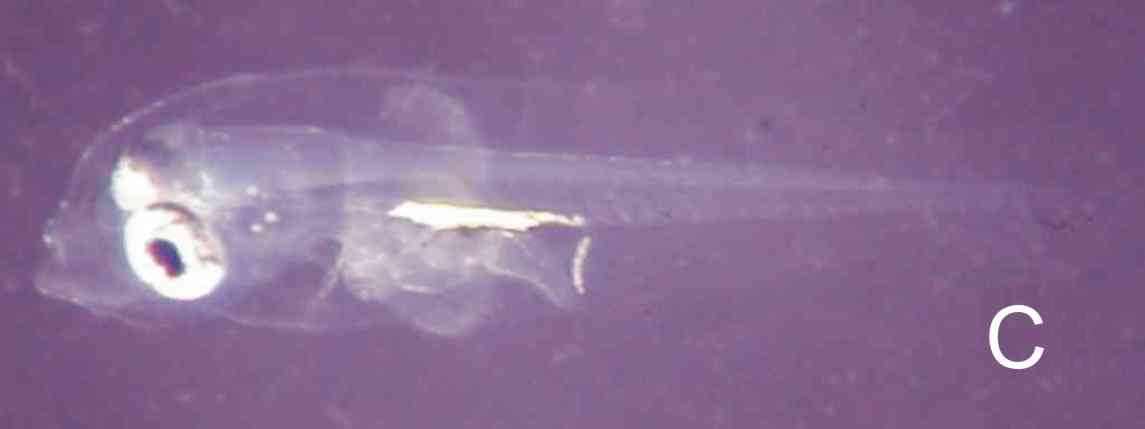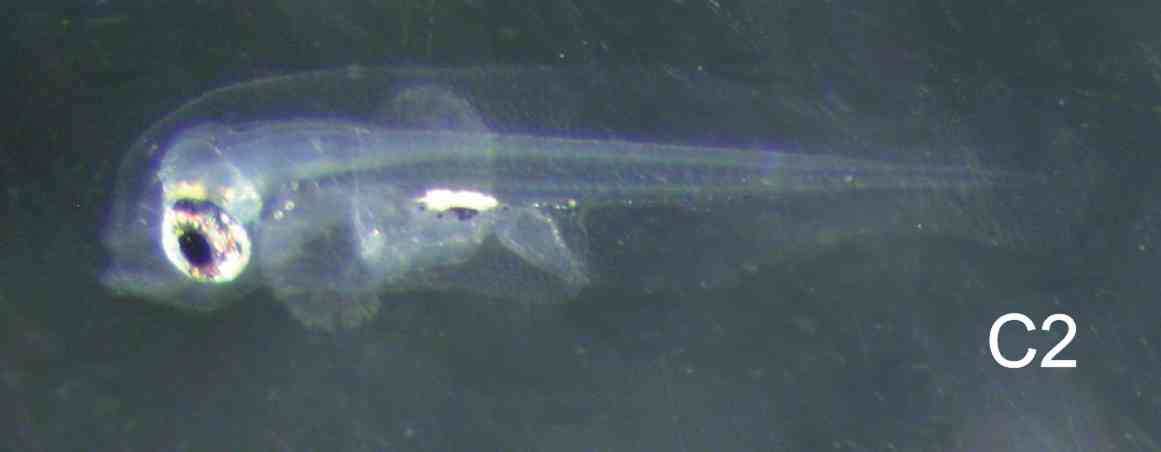Serranidae: L III D4
Cephalopholis sonnerati (Valenciennes, 1828)
Tomato rockcod





|
Egg diameter in µm |
Number of oil globules |
Diameter of oil globule in µm |
Yolk texture |
Perivitelline space |
Position of oil globule at hatch |
Gut length at eye- pigment stage |
Myomeres |
|
815-865 |
1 |
170-190 |
clear |
narrow |
stern |
52% of NL |
24 |
Egg: The yolk has a rough surface, the oil globule is clear, and there are usually no pigments visible in the egg. It is thus indistinguishable from other serranid eggs, LIIIB4 and LIIID2 in particular, until hatched. Incubation is 24-30 hours, so in summer these eggs are often hatching during the sorting and cataloguing process.
Larva: The NH larva (B) has paired yellow pigment dots behind the eyes and otic capsules, and a smudge of yellow just behind the oil globule. By day 3, there is a conspicuous yellow bar above the gut, similar to LIIIE7, but the larva does not have the beak-shaped mouth of LIIIE7. B: NH, C: 2 days (26°C).
Three hatched larvae have been barcoded, and match 6 locally collected C. sonnerati (BOLD). .


This is a summer and autumn spawner (blue graph). It was not seen in the DHM samples. It appears to have been more frequent in recent years, but this may just be due to increased vigilance. The 30 eggs seen in the Park Rynie linked samples, were shared equally between offshore and inshore, suggesting spawning is around the 30m contour, but numbers are small. See Section 7.3 and Table 1 of the Introductory Notes, for more information on the linked samples.